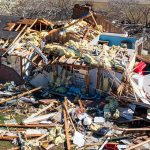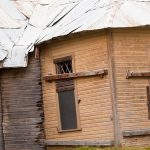Is All Structural Damage Visible?
Structural damage is any impairment or deterioration in the physical integrity of a building, infrastructure, or other manufactured structure.
While some types of structural damage are visible, such as cracks in walls or beams, other forms of damage may be less obvious and difficult to detect. It is important to understand that not all structural damage is visible to the naked eye, and failing to identify and address such issues promptly can lead to serious safety risks and costly repairs down the road.
In this article, we will explore the question of whether all structural damage is visible and discuss some common types of hidden damage that property owners and building managers should be aware of.
Common Signs of Visible Structural Damage
When it comes to structural damage, some signs of impairment are easily noticeable to the untrained eye. For instance, cracks in walls, ceilings, or floors are clear indicators of structural damage that require immediate attention.
Other visible signs of structural damage include leaning or bowing walls, sagging roofs, and doors or windows that no longer close properly. These signs may be accompanied by other symptoms, such as uneven floors or stairs, water stains, or mold growth.
It is important to note that not all visible signs of structural damage necessarily indicate that the property is unsafe, but they do warrant further inspection by a professional, such as a structural engineer or a public adjuster who specializes in property damage claims.
Public adjusters can help identify the cause and extent of the structural damage and provide valuable assistance in negotiating insurance claims to help cover the cost of repairs.
The Risks of Ignoring Visible Structural Damage
Ignoring visible structural damage can also pose significant risks to the safety of occupants and the financial health of property owners. Visible structural damage is a clear indication that the structural integrity of the building has been compromised and that additional underlying issues may need to be addressed.
Failing to address visible structural damage in a timely manner can lead to serious safety risks, including collapse or other structural failures. This can result in injury, loss of life, and significant financial liability for property owners.
Ignoring visible structural damage can also lead to additional property damage and reduce the property’s value. For example, a leaking roof can lead to water damage, mold growth, and other issues that can be expensive to repair. Cracks in walls or foundations can worsen over time, leading to more significant damage to the structure and its contents.
Working with a public adjuster specializing in property damage claims can help property owners mitigate these risks by identifying visible structural damage, documenting the extent of the damage, and advocating for fair compensation from insurance companies. Public adjusters can also guide you on how to address the underlying causes of the damage and prevent future issues from arising.
Hidden Structural Damage: What to Look For
Hidden structural damage can be particularly problematic as it may go unnoticed for an extended period of time, leading to significant safety risks and costly repairs. Some common types of hidden structural damage include water damage, insect infestation, and soil settlement.
- Water damage can occur from leaks or floods and may lead to rot, mold growth, or corrosion of structural components.
- Insect infestations, such as termites, can also cause significant damage to the wooden framework of a building, compromising its structural integrity.
- Soil settlement, on the other hand, can cause uneven settling of a building’s foundation, leading to cracks in walls, floors, or ceilings.
To identify hidden structural damage, it is important to look for signs of foundation movement or cracks, especially around doorways and windows. Unexplained moisture or musty odors may also indicate hidden water damage, and unusual cracks or bulges in walls may suggest insect infestation. In some cases, hidden structural damage can only be detected through specialized testing, such as infrared imaging or sound analysis.
If hidden structural damage is suspected, it is crucial to seek the assistance of a professional, such as a structural engineer or a public adjuster with expertise in property damage claims. Public adjusters can help to document the extent of the damage, identify its underlying causes, and advocate for fair compensation from insurance companies to cover the cost of repairs.
The Risks of Ignoring Hidden Structural Damage
Ignoring hidden structural damage can pose severe risks to the safety of occupants and the financial health of property owners. In some cases, hidden damage can lead to sudden structural failure, putting occupants at risk of injury or even death. Even when the damage does not result in an immediate safety risk, it can still compromise the integrity of the building and lead to more significant damage over time.
In addition to safety risks, ignoring hidden structural damage can also have significant financial consequences. If left unaddressed, hidden damage can lead to more extensive and costly repairs down the road. This can include replacing damaged materials, strengthening weakened structures, and rebuilding entire building sections.
In some cases, insurance companies may deny claims for hidden damage that was not detected or reported on time, leaving property owners to bear the full cost of repairs.
Working with a public adjuster who specializes in property damage claims can help to mitigate these risks by identifying hidden damage and advocating for fair compensation from insurance companies. Public adjusters can also provide guidance on how to prevent future damage and protect the property’s value.
Prevention: Maintaining the Health of Your Structures
Preventing structural damage is essential to maintaining the health and safety of any building or infrastructure. Regular maintenance and upkeep can help to identify and address potential issues before they escalate into more serious problems.
One crucial step in preventing structural damage is ensuring the property is adequately designed and constructed to withstand environmental and other external forces. This includes ensuring that the foundation is solid and that the building materials are durable and appropriate for the climate.
Another critical aspect of preventing structural damage is to stay on top of routine maintenance tasks, such as cleaning gutters, trimming trees, and repairing leaks. Ignoring minor issues can allow them to develop into more significant (and more expensive) problems. It is also important to be aware of any changes in the property’s environment, such as nearby construction or natural disasters, that could impact the structural integrity of the building.
In addition to regular maintenance, it is also wise to consult with a structural engineer or a public adjuster specializing in property damage claims to identify any potential areas of concern and develop a plan for addressing them proactively. Public adjusters can help to ensure that insurance policies are adequate and that any damage is properly documented to support a claim.
Trust Hudson Douglas Public Adjusters with Your Settlement
If you suspect hidden or visible structural damage to your property, don’t wait until it’s too late. Contact the experts at Hudson Douglas Public Adjusters today. With over 50 years of experience in construction and disaster restoration, we have the knowledge and expertise to ensure that you receive a fair settlement from your insurance company.
Our team of professionals uses industry-leading tools and software to assess the extent of the damage and advocate for your best interests.
Don’t face the claims settlement process alone. Let us help you navigate the process and get the compensation you deserve. Contact us today to schedule a consultation, or call us at 800-898-4290.




